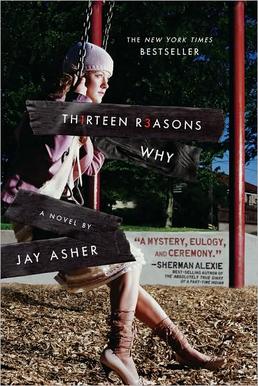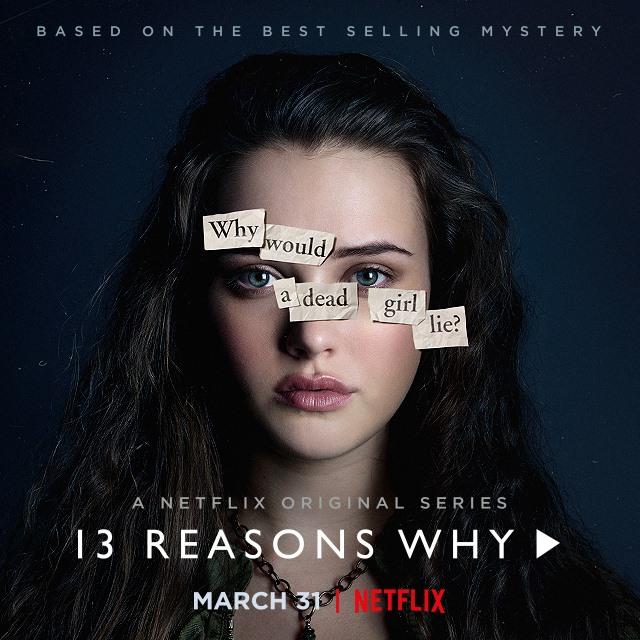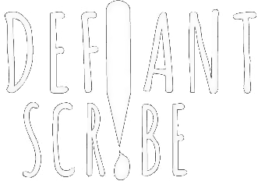A Review of Netflix’s “13 Reasons Why”
YA book enthusiasts and fanatics have many beliefs, one being that movies just don’t do our favorite books justice. Either they skip those “small” parts that we fell in love with, or change several “minor details” that we remember all too well.
One of my favorite YA novels has always been Thirteen Reasons Why by Jay Asher. I first read the novel in sixth grade after browsing through my language arts teacher’s library—which was better than the actual school library, I might add. I don’t know why, but that book stood out to me among the rest I read that year, and for years to come. The cover is simple, just a girl sitting on a swing. The plot isn’t one I haven’t read before: a girl goes to school, she gets bullied and commits suicide. Yet Thirteen Reasons Why is so much more than a girl committing suicide.

Months before its debut on Netflix, I was seeing commercials and ads for the adaptation everywhere. Honestly, I was skeptical. I really hoped they weren’t on the path to ruining a good thing as they sometimes do.
And they didn’t.
If anything, they brought the authentic and raw emotions of the book to life. They shed light on the darkness within high school walls, the danger in a picture, and the power of doing something—or doing nothing.
The story is one about a teenager named Hannah Baker and traces her life from her sophomore year to her junior year. It’s during the latter that Hannah has had enough. She commits suicide and ends it all: the emotional, physical, and mental load of life.
Well, what’s so different about that?
Hannah leaves thirteen tapes exposing thirteen reasons why she killed herself (hence the title), and the scariest thing is, twelve people (one fortunate person gets two) are linked to each of those reasons. The rules she sets forth are simple: listen to the tape and pass them on. On episode one of the series, the tapes have just been passed to Clay Jensen. It’s through him we listen to those thirteen tapes and relive the moments leading to Hannah’s death, learning what pushed her to do so.

There’s no sugarcoating the truth when it comes to this series. It’s real and it only gets harder to watch as you approach the end. Young adults constantly feel lied to and shielded from the truth, so to have a series blatantly hand you the truth on a silver platter is huge! It’s this truth and authenticity that’s been attracting viewers of various ages. Personally, I was sucked into the series and obsessed with it because it was like watching my high school on screen. I don’t mean to say those exact things happened there, but rather everything that’s on display in the series—whether it be actions, wardrobe, or words—are all things we witness today in high school. The hardest thing is watching a movie or a series where the kids don’t talk like we do. So many times, it runs through your head: They don’t act like we do! They don’t think like we do! They don’t interact with their parents like we do! They aren’t us at all! But that’s not the case here. I can guarantee you won’t finish the series without finding at least one thing (trust me, you’re going to find more than one) you can connect back to your own high school experience.
Besides the authenticity of the high schoolers, there’s no hesitation when it comes to the portrayal of sensitive material like rape and suicide, which is why viewer discretion is advised.
Why add the rape and the suicide? Isn’t that over the top or just too much? No, not at all. We hear of rape all the time, but for once I felt like I was in the position of the rape victim. While watching the rape scenes, I sat there wincing and shutting my eyes constantly, just imagining how awful it was to be in that person’s position. I actually felt what I was seeing. I felt the victim’s helplessness, and that’s something no class or tutorial or self-help book can teach you to feel.
Then there was the suicide scene, which likewise thrusted viewers into the position of a suicidal person. I was expecting to see Hannah’s weapon of choice, be led up to the point where she does it, then be transported away to the next scene.
That’s not what happened.
Surprised? Well, I was. I don’t want to spoil it for you, but I will tell you this: The suicide scene alone made me stay frozen, cringing and horrified. People always imagine suicide as being easy, one click or slit and you’re done. But nothing is as easy as it seems. You literally watch the suffering and the pain leading up to the loss of a life on screen. The entire experience is truly indescribable.
To wrap this up, I would like to share briefly five things I learned from this amazing series which accurately brings the novel to the big screen (our televisions).
#1. Sometimes all someone needs is a friend. Each day in life is an obstacle to face, a hurdle to jump, or a test to pass. Just having someone to talk to about what you’re going through, having someone to laugh with, or just having someone acknowledge your existence, does wonders for a person who feels ignored and unseen.
#2. A smile, a hello, a simple compliment, or even just a drawing of a rabbit (a reference to one of the episodes) can go a long way. Don’t take that away from someone. Don’t undermine the compliments they receive. Don’t ruin a good thing for them, because it just might be the only thing they look forward to each and every day.
#3. Healing cannot begin until all the secrets are out in the open. You may think digging them deeper within yourself may make it easier to forget, make it easier to move on, and just make life itself easier to confront. But you’re really just destroying yourself from the inside, and sooner or later, the truth will crawl its way out your mouth or through your actions.
#4. Your issues matter; there are no small issues. If it’s a problem for you, then it matters. If someone, perhaps a guidance counselor or teacher, isn’t giving an issue the attention you feel it deserves, then go somewhere else. As young adults, we often feel helpless. We often think this problem is bigger than us. Always remember there’s a world outside high school, with resources and aid and counsel just waiting to be given.
#5. Where you come from and individual aspects of who you are do not define you—unless you allow them to. Our past and our environment are like accessories that decorate our stories: they contribute to and help shape our stories, but they don’t define them or restrict where they can and cannot go. In the series, we are exposed to high schoolers of all different backgrounds, races, and social cliques. Each social clique or group is linked with a certain stereotype or designation, and the show does an excellent job of demonstrating that people are so much more than the labels attached to them.
If you haven’t seen the series yet, I strongly encourage you to check it out. For once I’m able to say, the series is just as good as the book. It’s amazing!

